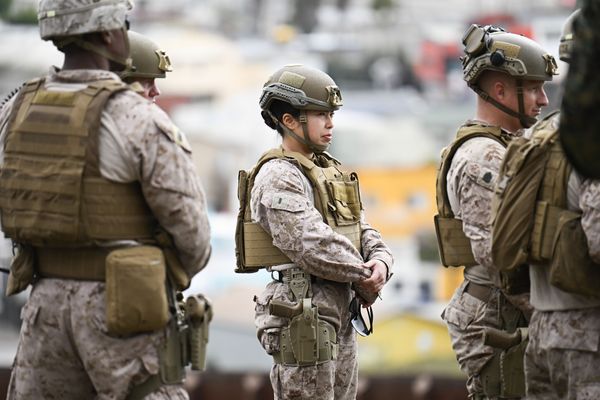
Western Australia has hit a new milestone in its Omicron outbreak, recording 1043 new cases and several more hospitalisations.
There are 12 people in hospital but none in intensive care.
Chief Health Officer Andy Robertson expects that to change in coming weeks as the state's caseload continues its exponential growth.
"The numbers are starting to increase. They're pretty much on track (with the health department's modelling)," he told ABC radio on Friday.
"The hospitalisations tend to be two to three weeks behind, so with these case numbers now we'll see the increasing numbers in hospital over the coming weeks."
Dr Robertson added the virus was likely to have spread further in the community than the case numbers suggested.
"Not everybody's getting tested. There is quite a lot of asymptomatic disease out there," he said.
"One of the things that is going up is our case positivity rate. That actually gives us a reflection that we're probably not ... capturing everyone."
The state is likely to soon move to "very high caseload" settings, allowing critical workers to continue working when they test positive if they are asymptomatic.
A requirement to quarantine for seven days will remain for most people who test positive and their close contacts.
Dr Robertson said he was yet to formally advise the government on a threshold for when level two public health restrictions should come into effect.
Level two rules would include stricter density limits at hospitality venues and a requirement for children as young as year three to wear face masks at school.

But while Premier Mark McGowan appeared to identify hospitalisation rates as the key variable for tightening restrictions, Dr Robertson said case numbers would be the key.
"People are very focused on how many people are in hospital at the moment," he said.
"The reality is, the cases now are forming the basis for us to have hospital cases tomorrow.
"The public health social measures have to be brought in at a certain level because if we let them go too far, from our modelling we'll end up with far more cases, far more people in hospital and more people in ICU."
Meanwhile, an outbreak in WA's largest remote Aboriginal community has grown to 27 cases as a street testing blitz continues.
Kimberley Aboriginal Medical Services has reported 10 new cases in Bidyadanga, while a further three have been picked up in the nearby community of Beagle Bay.
A lockdown remains in place in Bidyadanga, about 180km south of Broome in the Kimberley region, while more testing is undertaken.
KAMS said health workers had begun carrying out street testing in hot and humid conditions and aimed to reach the entire community.
It said 90 per cent of residents aged 12 and over were double dosed, with 10 per cent having received a booster.
WA Health said positive cases were being provided with care packages including meters to monitor vitals such as blood oxygen levels. Anyone who has been in the community since February 15 is being urged to present for testing.
Six cases have so far been recorded in the smaller community of Mantamaru, near the borders with South Australia and the Northern Territory.
As of Thursday, WA had 2272 active cases.
The state's third vaccination dose rate has surpassed 60 per cent and is on track to reach 70 per cent by the time the borders reopen on March 3.







